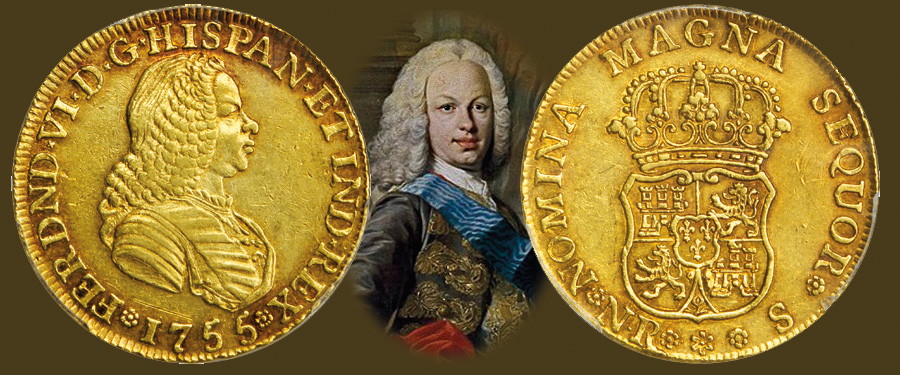
Crossing the block next
month as lot 11306 at our official auction of the New York International
Numismatic Convention is a historic landmark among Colombian coins. It is the
only known example of the first milled 4 Escudos of Colombia. Richly toned with
orange and coppery highlights around the peripheries of both sides, especially
bold on the obverse. It is sharply struck and nicely lustrous for the grade,
with some reflective texture visible on the obverse and more shining brightly
from the protected areas of the reverse. Denticles frame both sides, but those
at the upper left obverse are longest. A short scratch crosses the field above
17 of the date, and a dull scrape is present between the crown and EQ of
SEQUORS, but otherwise no notable marks are seen. Further, no planchet flaws or
striking anomalies are present, a testament to the skill of the mint workers in
Bogotá and their ability to create a fine product during their first efforts
using coining mills and the advanced technology that accompanied it.
Traditional interpretations of the technological changeover at the mint at
Santa Fe suggested that hammered cob coinage stopped before milled coinage
began. However, the existence of both hammered and milled coins dated 1755
suggests that the transition was more gradual, even that the two genres of
coins were struck contemporaneously. Even before this coin was discovered in
2004, students of this series knew there was a good possibility of a milled
survivor from 1755. A.M. Barriga Villaba’s Historia De Las Casa De Moneda records
that 32 marks of milled gold coinage was produced in Santa Fe in 1755, equal to
2,176 Escudos. That figure is dwarfed by the 8,393 marks of hammered gold
coinage produced that year. Gold cobs of 1755 are extremely rare today, and the
existence of even a single milled gold coin from Santa Fe’s 1755 mintage is a
miracle.
In 2013, lightning struck twice when a 1755-S 8 Escudos was discovered and
auctioned by Stack’s Bowers Galleries. Previously unknown and totally new to
numismatics, the coin brought $223,250. If all 32 marks of gold were devoted to
8 Escudo production in 1755, the mintage would have been just 272 coins. If the
gold was evenly divided between 8 Escudos and 4 Escudos, the mintages would
have been 136 specimens of the onza and 272 4 Escudos. Regardless of the
original mintage, the surviving population is finite and confirmed: just one
example of this coin exists.
This coin has appeared at auction only twice, in 1943 and 2005. No other 4
Escudos from any mint could be considered rarer or more historically important
than this one.





